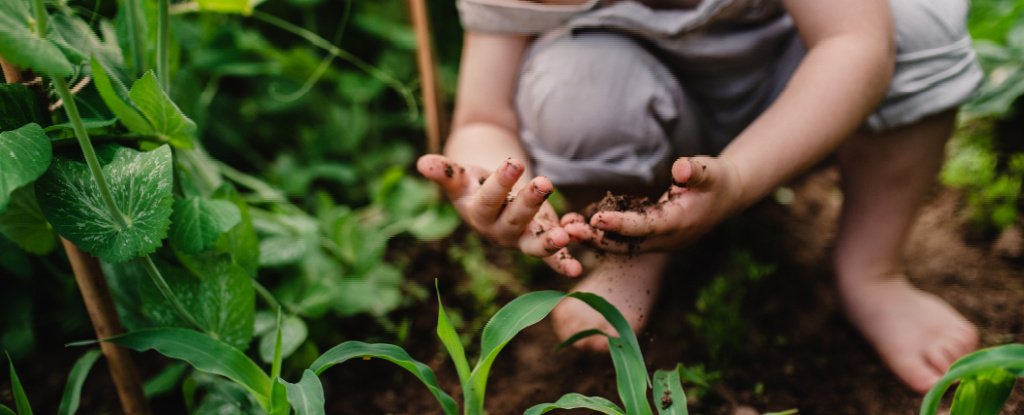Daycares in Finland Grew Forests, And It Changed Kids’ Immune Systems

Impact of Green Spaces on Children’s Immune System
A recent experiment conducted in Finland suggests that spending time in green spaces can have a significant impact on a child’s immune system. The study, which focused on daycare centers, found that introducing natural elements such as grass, forest undergrowth, and planter boxes with crops led to positive changes in the diversity of microbes in children’s guts and on their skin. These changes were associated with improved immune markers in their blood within just one month.
The Role of Sustainable Development Goals (SDGs)
This study aligns with several Sustainable Development Goals (SDGs), including:
- SDG 3: Good Health and Well-being
- SDG 11: Sustainable Cities and Communities
- SDG 15: Life on Land
Manipulating Urban Environments for Research
This experiment in Finland was the first of its kind to deliberately modify a child’s urban environment and examine the resulting changes in their microbiome and immune system. By comparing different daycare centers, researchers were able to demonstrate that exposure to green spaces positively influenced the diversity of microbes in children’s bodies.
The Biodiversity Hypothesis
The findings of this study support the biodiversity hypothesis, which suggests that a lack of biodiversity in urban areas may contribute to the prevalence of immune-related diseases. The researchers propose that contact with nature can help prevent disorders in the immune system, such as autoimmune diseases and allergies.
Study Design and Results
The study involved 75 children aged three to five years from 10 different urban daycare centers. Some centers had standard yards with concrete and gravel, while others incorporated daily nature time or updated their yards with grass and forest undergrowth. The children in the latter group had the opportunity to play in the green spaces five times a week for 28 days.
Comparing the microbiota of the children’s skin and gut before and after the trial, researchers observed increased diversity in the microbial communities of those who regularly played in green spaces. Specifically, the presence of gammaproteobacteria was associated with enhanced immune defense in the skin and increased beneficial immune secretions in the blood.
Implications and Future Research
While further research is needed to establish the causal effects of nature on children’s health, these findings highlight the potential benefits of green spaces for immune system development. Additionally, spending time outdoors has been linked to improved eyesight, better mental health, and even structural changes in children’s brains. Encouraging children to bond with nature can also foster environmental consciousness, which is crucial for addressing global challenges.
Conclusion
The study emphasizes the importance of incorporating green spaces into urban environments, especially in daycare centers and other settings where children spend significant amounts of time. By promoting contact with nature, we can contribute to the well-being of children and support the achievement of various SDGs related to health, sustainable cities, and biodiversity conservation.
An earlier version of this article was published in October 2020.
SDGs, Targets, and Indicators
1. Which SDGs are addressed or connected to the issues highlighted in the article?
- SDG 3: Good Health and Well-being
- SDG 11: Sustainable Cities and Communities
- SDG 15: Life on Land
2. What specific targets under those SDGs can be identified based on the article’s content?
- SDG 3.9: By 2030, substantially reduce the number of deaths and illnesses from hazardous chemicals and air, water, and soil pollution and contamination.
- SDG 11.7: By 2030, provide universal access to safe, inclusive, and accessible, green and public spaces, in particular for women and children, older persons, and persons with disabilities.
- SDG 15.1: By 2020, ensure the conservation, restoration, and sustainable use of terrestrial and inland freshwater ecosystems and their services, in particular forests, wetlands, mountains, and drylands, in line with obligations under international agreements.
3. Are there any indicators mentioned or implied in the article that can be used to measure progress towards the identified targets?
- Indicator for SDG 3.9: Number of children with improved immune markers and reduced prevalence of immune-mediated diseases after exposure to green spaces.
- Indicator for SDG 11.7: Number of daycare centers with greened-up environments and increased access to nature for children.
- Indicator for SDG 15.1: Increase in biodiversity and microbial diversity in the guts and on the skin of children after exposure to green spaces.
Table: SDGs, Targets, and Indicators
| SDGs | Targets | Indicators |
|---|---|---|
| SDG 3: Good Health and Well-being | Target 3.9: By 2030, substantially reduce the number of deaths and illnesses from hazardous chemicals and air, water, and soil pollution and contamination. | Number of children with improved immune markers and reduced prevalence of immune-mediated diseases after exposure to green spaces. |
| SDG 11: Sustainable Cities and Communities | Target 11.7: By 2030, provide universal access to safe, inclusive, and accessible, green and public spaces, in particular for women and children, older persons, and persons with disabilities. | Number of daycare centers with greened-up environments and increased access to nature for children. |
| SDG 15: Life on Land | Target 15.1: By 2020, ensure the conservation, restoration, and sustainable use of terrestrial and inland freshwater ecosystems and their services, in particular forests, wetlands, mountains, and drylands, in line with obligations under international agreements. | Increase in biodiversity and microbial diversity in the guts and on the skin of children after exposure to green spaces. |
Copyright: Dive into this article, curated with care by SDG Investors Inc. Our advanced AI technology searches through vast amounts of data to spotlight how we are all moving forward with the Sustainable Development Goals. While we own the rights to this content, we invite you to share it to help spread knowledge and spark action on the SDGs.
Fuente: sciencealert.com

Join us, as fellow seekers of change, on a transformative journey at https://sdgtalks.ai/welcome, where you can become a member and actively contribute to shaping a brighter future.







